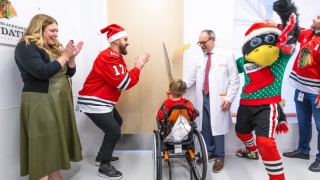Body
Being elderly or having a disability can put a person at risk in an emergency, especially in the case of someone who has difficulty physically reaching or using a telephone. Emergency call systems can be very helpful, allowing a person at home to summon caregiver assistance inside the home or to call outside the home to a neighbor or 911.
The Shirley Ryan AbilityLab does not endorse any one system; we encourage patients and their families to investigate the system that best meets individual needs.
ADT Medical Alert Systems
ADT is a leading provider of home and business security systems, offering 24/7 professional monitoring, smart home automation, and video surveillance solutions. The site allows users to explore customizable security packages, request quotes, and access customer support.
Phone: 800.248.1246
American Medical Alarms, Inc.
American Medical Alarms offers personal emergency response systems designed to help seniors live independently while staying safe. Their medical alert devices connect users to a 24/7 monitoring center with just the push of a button, providing peace of mind for families and caregivers.
Phone: 888.473.2800
Bay Alarm Medical
No long term contact. No up front fees. Can be coordinated with landline or cell phone. Provides bracelets or pendants that are 100% waterproof. Also has option to include a button for the bathtub.
Phone: 877.522.9633
Life Alert
"Help, I've fallen and I can't get up."
Phone: 800.360.0329
Lifeline Medical Alert Systems
Many options for your mobile safety.
Phone: 855.415.5815
LifeStation, Inc.
LifeStation provides medical alert systems for seniors, offering 24/7 emergency monitoring, GPS tracking, and fall detection features. Their services are designed to help older adults maintain independence while ensuring quick access to help during emergencies.
Phone: 877.912.3194
Body
This content is for informational purposes only and may not be comprehensive. Information contained does not imply an endorsement from Shirley Ryan AbilityLab, and does not replace the advice of a qualified healthcare professional. See here for further details.
© Shirley Ryan AbilityLab (formerly Rehabilitation Institute of Chicago)
Henry B. Betts LIFE Center – (312) 238-5433



